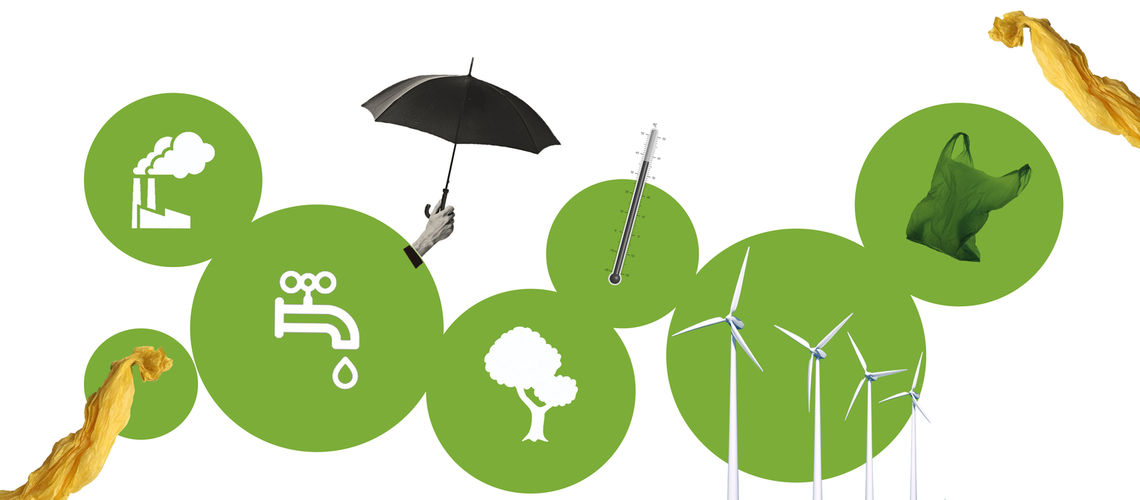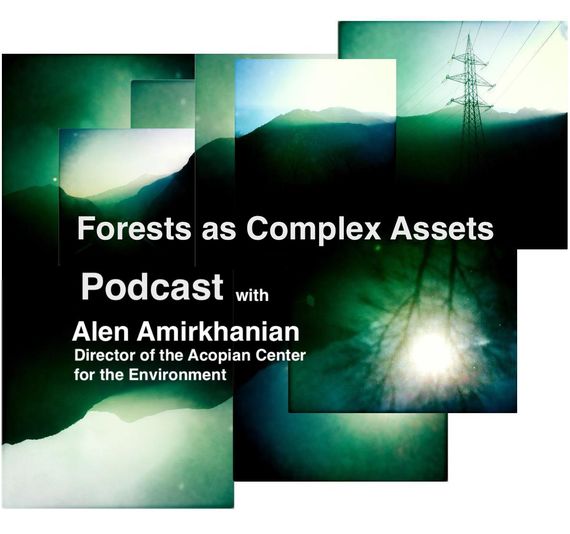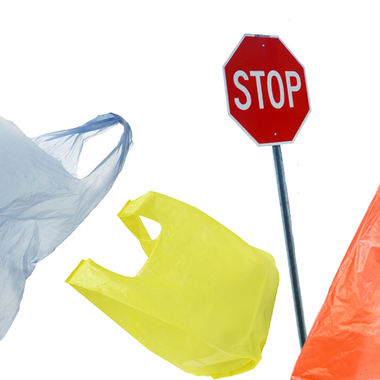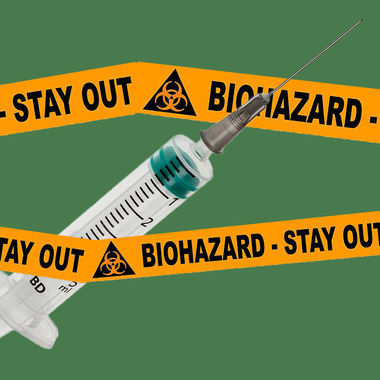Mon May 25 2020 · 8 min read
The European Green Deal and Its Implications for Armenia

By Anna Barseghyan

In the 21st century, climate change poses a collective action problem that promises irreversible damage to Earth’s habitat if it is not solved. With the clock ticking, in November 2019, the EU Commission adopted a new growth strategy it called the European Green Deal as a response to climate challenges and a roadmap toward transformation into a more resource-efficient and competitive economy. The EU’s objective is to “protect, conserve and enhance the EU's natural capital, and protect the health and well-being of citizens from environment-related risks and impacts.” President of the European Commission Ursula von der Leyen described the European Green Deal as “Europe’s ‘man on the moon’ moment.” It aims to stop climate change, boost efficiency in the use of resources, bring about a circular and clean economy, and prevent the extinction of biodiversity. The strategy is accompanied by a concrete action plan, financing tools, precise objectives and milestones.
What’s the Deal?
The ambitious goal of the European Green Deal is to become climate-neutral by 2050, requiring that no net new greenhouse gases are emitted after that date. By introducing a circular economy, an intermediate target of reducing emissions to 50% of 1990 levels by 2030 has been agreed to. Reconstructing the industrial sector and the underpinnings of the economy will take 25 years and so immediate action is needed to achieve the 2050 goals.
By encouraging companies to become world leaders in clean technologies, the EU hopes to protect human lives, animals and plants by scaling down pollution. In the process, it is expected to create new jobs as every sector of the economy undergoes reform. The biggest transformation will come in the energy sector. Over 75% of the EU’s greenhouse gas emissions come from the production and consumption of energy. The effort to decarbonize the sector will include the renovation of buildings, where 40% of energy is consumed.
Although the EU is a world leader in recycling, only 12% of European industry uses recycled material. The circular economy will define measurements for businesses, which will give customers a choice to use durable and repairable products. Changing nutrition habits and using new technologies and scientific discoveries will play a crucial role in achieving circulation in the food value chain. The Farm to Fork Strategy aims to reduce the negative impact of food processing, including food waste, transportation, storage and packaging. The EU is looking to support food-tech innovations, such as seafood based on algae. The EU will also enhance its investigative capacity to combat food fraud.
The EU as an institution and the cluster of developed states can’t achieve this goal on their own. It will require collaboration between a plethora of actors: state institutions, trans-governmental organizations, business, industry and ordinary citizens. To support the effort, the Commission announced the Sustainable Europe Investment Plan (SEIP) to mobilize €1 trillion over the next decade. An additional €260 billion ((1.5% of the EU’s GDP) in annual investments is needed to achieve just the intermediate 2030 targets for climate and energy. The EU should work hand in glove with national governments to create a favorable tax environment to promote investments in the green sector.
Climate Diplomacy
The outbreak of the unprecedented COVID-19 pandemic is a showcase that global challenges can’t be faced and overcome without international cooperation. The EU’s capacity alone is not enough to tackle climate change and prevent biodiversity loss; however, it will test the world’s ability to act in an inclusive and coordinated way. The EU’s agenda has long since incorporated climate diplomacy, which is also reflected in the European Green Deal. The EU aspires to global leadership in green policy and its implementation throughout the globe by promoting sustainable development with robust “green deal diplomacy,” leveraging tools from political influence and financial resources to expertise in the field. The primary emphasis will be on the EU’s immediate neighbors. “The ecological transition for Europe can only be fully effective if the EU’s immediate neighborhood also takes effective action. The Commission and the High Representative are also envisaging a number of strong environment, energy and climate partnerships with the Southern Neighborhood and within the Eastern Partnership,” mentions the European Green Deal.
In accordance with the strategy’s suggestions, the Eastern Partnership policy beyond 2020 document, adopted in March 2020, includes green resilience as one of the key pillars of the partnership. “Our neighbors’ strength is also the European Union’s strength; the Eastern Partnership remains a crucial element of the EU’s foreign policy,” says the document.
Advancing a green agenda for the Eastern Partners (Armenia, Azerbaijan, Belarus, Georgia, Moldova and Ukraine) will require massive investment to transform the neighborhood into a wealthy zone with resource-efficient, clean, circular and competitive economies. The EU will assist the countries in creating new green jobs, ensuring a smooth green transition, developing and using renewable and environmentally-friendly sources of energy, and cooperating with civil society to raise awareness.
It is worth mentioning that, from 2013 to 2017, the European Commission financed the Greening Economies in the Eastern Neighbourhood programme, the aim of which was to help the six countries achieve economic growth without endangering the environment.
Challenges and Opportunities For Green Policy in Armenia
Ecological issues and green ideas have always been agenda-setters in Armenia’s socio-political life. The 1980s independence movement itself started with ecological demands by the first “green” groups that had formed an opposition to Soviet leadership. Environmental demonstrations against heavy industry subsequently merged with patriotic ones to achieve independence for Armenia in 1991. Since that time, environmental issues have continued to be a point of contention against government policies in the areas of mining and forestry. While it is a good indication of public concern, more active consideration will be required to address the larger problem of climate change.
Climate change and its adverse environmental, economic and social consequences will be a huge challenge for Armenia. According to research, by 2100, climate change is expected to lead to an increase in the average temperature in Armenia by 1.7 degrees Celsius, along with a 10% decrease in precipitation. As a result, drought will become more common, desertification will accelerate, pastures will dry up and water flow into Lake Sevan will decrease by 15%. Consequently, crop production is estimated to decline by 8-14%, livestock production by 30% and the prevalence of cardiovascular and intestinal diseases will see an increase. To prevent such a catastrophic scenario, there is a need to act now.
However, there are several obstacles to green transformation. Armenia is highly dependent on imported hydrocarbons, which are used for transportation, electricity generation and other residential and industrial purposes. Sixty-three percent of Armenian primary energy consumption comes from natural gas. Four fifths of this natural gas is imported from Russia, with the other 20% coming from Iran. The electricity sector is more balanced and based on 38% nuclear power, 24% hydro and 0.04% from wind and sun energy. Though Armenia has huge potential for solar energy, it is currently only providing 0.008% of total energy needs. According to UNDP, 25% of Armenian territory has the potential to produce solar energy. Separately, wind energy has the potential to produce 78% of annual energy consumption. The usage of renewable energy will help Armenia diversify its sources of energy, strengthen energy security, reduce its energy dependence on Russia and of course protect nature by reducing emissions. Here, Armenia needs the EU's assistance, which should not only be in the form of policy, expertise or small projects but also investment. Transforming the energy sector into a green alternative is quite expensive. Moreover, the cost of electricity produced from renewable sources is much higher than the status quo. To achieve environmentally-friendly results, the EU should help Armenia with investments and financial assistance to transform the energy sector and balance its costs.
One of the dilemmas Armenia is facing is how to manage its mining sector. Armenia has 5.1% of the world’s molybdenum reserves and an abundance of copper and gold. The mining sector provides 2.8% of GDP and more than 50% of foreign exports. Nonetheless, it leaves a long-term negative impact on nature. In balancing ecology and economy, Armenians had a terrible experience in the 1990s when environmentalists forced the shutdown of ecologically-harmful factories and the nuclear power plant. Armenia was left without electricity and reduced economic income. This traumatic past is used by the mining sector to silence complaints. Here, we need a strong alternative: new jobs, new sources of incomes to displace mining. The EU, in the scope of the green deal, should support Armenia in considering alternatives to the economic weight of the mining sector that can minimize environmental damage.
The circular economy is another huge issue in Armenia. In 2018, only 15% of plastic waste was recycled, while the global average is closer to 50%. A new law, adopted in 2020, proposes a ban on the sale and use of plastic bags in commercial establishments after January 1, 2022. It may be a drop in the ocean but Armenia needs to reconstruct the economic system to embed recycling. For this purpose, the experience of the EU will be indispensable. There is a need to start from simple steps like waste sorting by households.
Together with the EU, Armenia has already started to implement several green projects, but there is a growing urgency to transform the agenda and raise civic consciousness to make green ideas an indispensable part of the lives of ordinary citizens. The EU, civil society and the Armenian government should work together to minimize the risks of climate change, to preserve nature and biodiversity, and ensure the well-being of humans in harmony with the ecosystem.
A welcome first step is that the Armenian government, together with the Foundation of Armenian Science and Technology (FAST), has initiated a program to plant 10 million trees across the country by October 10, 2020, as a sign of unity among the world’s 10 million Armenians. Due to COVID-19, however, the project has been delayed to 2021.
also read
Armenia Bans Plastic Bags
By Irina Ghaplanyan
The government of Armenia has set the effective date for a ban on plastic bags to January 1, 2022. It is projected that the ban will reduce plastic waste by nearly 4000 tons annually.
Where Does Armenia’s Medical Waste Go?
By Lusine Sargsyan
What is medical waste and how should it be treated? Because of the cost involved in proper treatment, it is possible that potentially biohazardous waste is ending up in municipal dumps.
How to Respect, Not Waste, Food
By Kushane Chobanyan
Food waste is a serious global issue. Roughly one third of the food produced globally gets lost or wasted. In fact, most of it ends up in a landfill. What is Armenia doing to tackle this issue?
Who is Educating Armenia’s Youth About the Environment?
By Gayane Ghazaryan
With no comprehensive environmental curriculum in Armenian schools, individual teachers and NGOs have taken it upon themselves to educate the youth about pressing environmental issues from climate change to recycling.
Podcast

To understand the threats to Armenia’s forests and issues that need to be managed and understood if Armenia wants to rapidly increase its forest cover, EVN Report spoke with Alen Amirkhanian, the director of the Acopian Center for the Environment about policy failures, conservation and protection, reforestation, afforestation and the potential role of protected areas in the development of tourism in Armenia.








EVN Report welcomes comments that contribute to a healthy discussion and spur an informed debate. All comments will be moderated, thereby any post that includes hate speech, profanity or personal attacks will not be published.